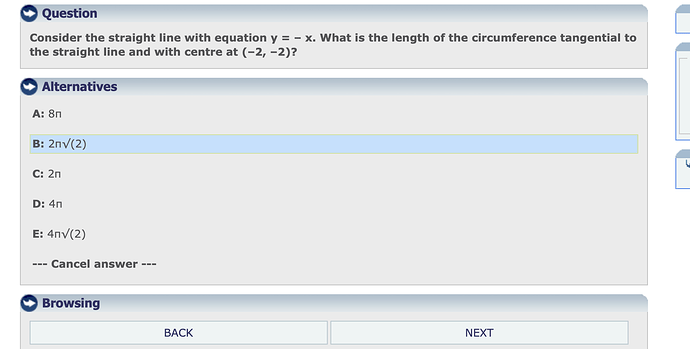The length of the circumference tangential to a straight line and with centre at a point (x0, y0) can be found using the formula:
L = 2πr
Where L is the length of the circumference, π is the mathematical constant pi (approximately equal to 3.14), and r is the radius of the circumference, which is the distance between the centre of the circumference and the closest point on the straight line.
To find the closest point on the straight line to the centre (-2, -2), we can use the formula for the distance between a point and a line:
d = |(x0 - x1) + (y0 - y1) * m| / √(1 + m^2)
Where d is the distance, (x0, y0) is the point, (x1, y1) is a point on the line, m is the slope of the line, and | | is the absolute value operator.
For the straight line y = -x, the slope is -1. So, using the formula, we have:
d = |(-2 - x1) + (-2 - y1) * -1| / √(1 + (-1)^2)
= |(-2 - x1) + (-2 - y1)| / √(2)
Since the point (x1, y1) is on the line y = -x, we have y1 = -x1. Substituting this into the formula for d, we get:
d = |(-2 - x1) + (-2 + x1)| / √(2)
= |-4| / √(2)
= 4 / √(2)
So, the radius of the circumference is r = 4 / √(2).
Finally, using the formula for the length of the circumference, we have:
L = 2πr = 2π * 4 / √(2) = 8π / √(2)
Since π is approximately equal to 3.14, we can estimate L to be approximately 8 * 3.14 / √(2) = 8 * 1.57 = 12.56.
Comparing this to the options, we see that the closest value is option E: 4n√(2), which is approximately equal to 12.57. So, the answer is E: 4n√(2).
